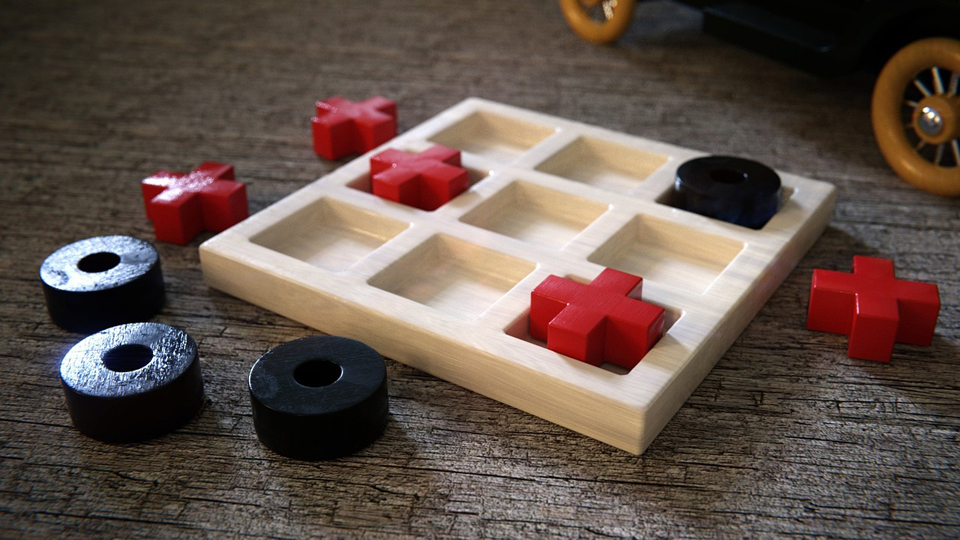The Evolution of Tic Tac Toe: From Ancient Origins to Digital Domains
Tic Tac Toe, the timeless game that has transcended generations, cultures, and now, technological eras, holds a fascinating history. From its humble beginnings as a chalk-drawn diversion on ancient Roman streets to its current manifestation as a digital game accessible on smartphones worldwide, the journey of Tic Tac Toe is a testament to the enduring appeal of simplicity and strategy. In this comprehensive exploration, we delve into the rich history of Tic Tac Toe, tracing its origins, unraveling its cultural significance, and examining its transformative journey into the digital age.

I. Ancient Roots: Tracing the Origins of Tic Tac Toe
Long before the advent of digital technology, Tic Tac Toe found its roots in ancient civilizations. The game's origins can be traced back to ancient Egypt, where it was discovered scratched onto the surfaces of roof tiles dating back to 1300 BCE. Known as "terni lapilli" in Latin, Romans also embraced this simple pastime. It was commonly played on the streets, with players using stones to create the iconic three-by-three grid.
The simplicity of Tic Tac Toe made it a universal game, transcending geographical boundaries. In ancient China, the game was known as "luo shu" and was deeply intertwined with Chinese philosophy, reflecting the harmony and balance sought in traditional Chinese culture.
II. Cultural Significance: Tic Tac Toe Across Civilizations
As Tic Tac Toe spread across different cultures, it acquired unique nuances and significance. In medieval England, the game was known as "noughts and crosses," and it became a popular pastime for both adults and children. The grid-based structure of Tic Tac Toe lent itself to easy replication on paper, making it an accessible diversion for people of all ages.
In Japan, the game evolved into "mokuri," a traditional game with similarities to Tic Tac Toe. Played with wooden pieces on a grid, mokuri incorporated elements of strategy and skill, reflecting the cultural emphasis on discipline and mental acuity.
III. Mathematical Insights: Tic Tac Toe in the World of Mathematics
Beyond its cultural implications, Tic Tac Toe found itself entwined with the world of mathematics. The game, with its limited set of possibilities, became a subject of mathematical analysis. In the mid-20th century, mathematicians and computer scientists began exploring the game's complexity. Tic Tac Toe's simple rules and limited grid size made it an ideal candidate for introducing concepts like game theory to students.
Through mathematical analysis, researchers unveiled the optimal strategy for Tic Tac Toe, leading to the realization that, if both players play perfectly, the game will always end in a draw. This revelation added a new layer to the game, transforming it from a mere pastime into an educational tool.
IV. The Digital Revolution: Tic Tac Toe in the Age of Computers
With the advent of computers, Tic Tac Toe underwent a transformative phase. In the 1950s, computer programmers started developing simple artificial intelligence (AI) algorithms to play Tic Tac Toe. Early computer versions of the game pitted the player against the computer, introducing a new dimension to the age-old pastime.
As technology advanced, Tic Tac Toe transitioned from physical boards to digital screens. The game became a staple on early personal computers, providing users with a familiar and accessible introduction to the world of digital gaming. With the rise of the internet, online multiplayer versions of Tic Tac Toe emerged, allowing players to compete with opponents from around the globe.
V. Educational Value: Tic Tac Toe in Cognitive Development
While Tic Tac Toe is often viewed as a simple and casual game, its educational benefits should not be underestimated. The game serves as an excellent tool for cognitive development, particularly in children. Playing Tic Tac Toe enhances strategic thinking, pattern recognition, and spatial reasoning. As a result, educators have embraced the game as a valuable addition to early childhood education.
Researchers have conducted studies demonstrating the positive impact of Tic Tac Toe on cognitive skills. The game's combination of simplicity and strategic depth makes it an effective tool for fostering critical thinking and problem-solving abilities.
VI. Modern Variations: Beyond the Classic Grid
In the digital age, Tic Tac Toe has not only retained its classic form but also spawned various modern variations. Developers have introduced new twists to the traditional game, incorporating larger grids, additional players, and enhanced graphics. These modern variations aim to maintain the timeless appeal of Tic Tac Toe while offering a fresh and engaging experience for contemporary audiences.
Mobile applications have further popularized Tic Tac Toe, making it a readily accessible game for users of all ages. The ease of gameplay and the short duration of each match make it a perfect choice for quick entertainment on the go.
VII. The Future of Tic Tac Toe: Integration with Emerging Technologies
As technology continues to evolve, Tic Tac Toe is poised to undergo further transformations. The integration of emerging technologies such as virtual reality (VR) and augmented reality (AR) could revolutionize the way we experience the game. Imagine playing Tic Tac Toe in a three-dimensional virtual space or on a tabletop with holographic projections.
Additionally, advancements in AI could elevate the complexity of computer opponents, providing players with more challenging and dynamic experiences. The future of Tic Tac Toe lies at the intersection of tradition and innovation, promising to captivate new generations of players.
Tic Tac Toe, with its ancient roots and adaptive nature, has stood the test of time. From the dusty streets of ancient Rome to the vibrant screens of smartphones, the game has evolved, leaving an indelible mark on human culture. Its simplicity, coupled with its enduring appeal, has made Tic Tac Toe a timeless classic that continues to bring joy, challenge the mind, and bridge generations across the digital landscape.